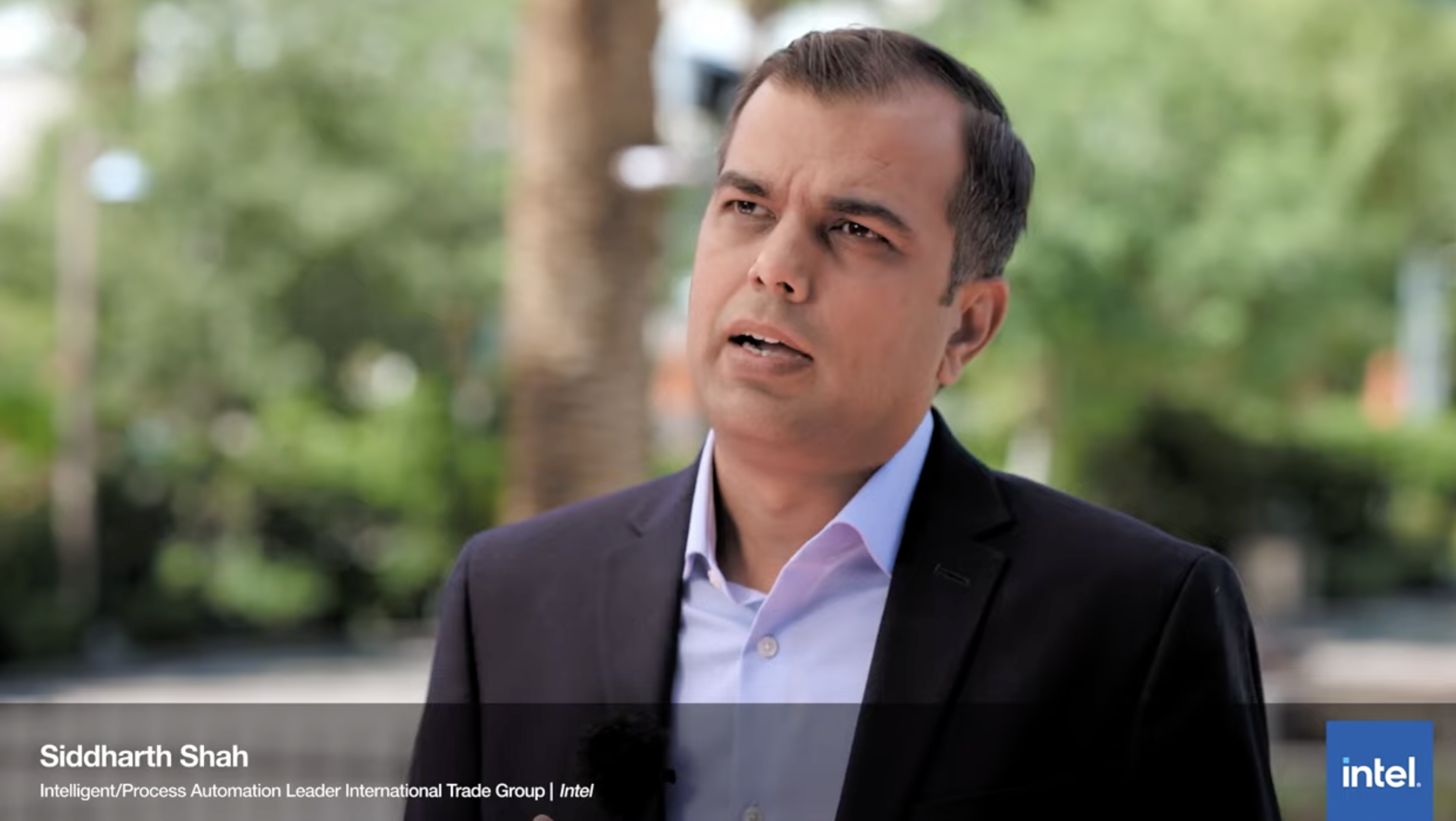Putting AI to work across your SAP estate

SAP® customers are well-positioned to realize significant benefits through the combination of automation and AI—with a sky-high return on investment.
If you think about AI as ‘the brain,’ you need a ‘body’ to make things happen. Enter automation. Connecting AI and automation lets you experience the potential of AI and quickly capture the full benefits on offer.
In my last blog post, we talked about how AI-powered automation can radically shorten SAP S/4HANA migration projects. But where else can automation and AI have a transformative impact within an SAP environment?
The short answer: everywhere. In finance and accounting. In human capital management. In customer experience. Across your enterprise resource planning (ERP) estate.
We’ll dive into specific use cases in a minute. First, it's important to understand how to make AI quickly accessible to the business.
How businesses are quickly accessing and utilizing AI
Making AI accessible in a way that drives value to business users means adding AI into the workflows that drive the underlying business processes. Yet it is in the initial adoption and implementation of AI where many organizations struggle.
Let's talk about how to make it happen.
There are two ways to include AI in a business process—and automation is the essential ingredient for both.
The most common approach is to upgrade an existing process—adding new AI-based capabilities to improve performance, accuracy, or another key metric. A great example here (and one of the most business-mature use cases for AI today) is intelligent document processing (IDP).
Built on a foundation of automation, IDP can process documents at a massive scale: understanding the content, extracting the required text, and connecting it all back to the core SAP business system. Integrating a human review ensures any risks to accuracy are captured early.
In the second scenario, AI unlocks entirely new business processes that were previously not viable. Imagine you want to go back five years and query every customer email, support ticket, voice and chat message to understand and summarize your customers’ key issues and concerns. The process didn’t exist before because the request volume would require human review at a scale that wasn’t feasible and was too expensive. It simply wasn’t practical.
Now, though, using communications mining technology that leverages natural language processing (NLP), it’s easy to build a simple, automated process that understands and classifies customer feedback. This workflow can also recommend and generate automated responses to new requests using the most accurate and useful information available.
Realize more value from AI by adding an automation layer
What unites both of these scenarios is the need for an automation layer—without which the AI ‘brains’ cannot take action.
More specifically, organizations will require the robust, unified automation that only an end-to-end automation platform can provide.
Why a platform?
Enterprise business processes cannot rely on simplistic agents or manually managed scripts. If they break or run slowly, it can have a material impact on the performance and stability of critical business operations. Reliability and transparency are critical.
An enterprise-grade automation platform provides security, visibility and governance and minimizes operational risk. While it’s relatively easy to script your own automations to run simple workflows and even to operationalize AI into production, it also creates tech debt for the IT organization. Scripts written by subject matter experts need to be maintained, which creates a new burden with every contribution. Very quickly, you’ll see these (highly paid) experts spending more time maintaining their scripts than doing the high-value work they’re best at. It simply doesn’t scale and leads to a productivity ceiling that is only made worse as the demand for more AI projects increases. Conversely, there is no ceiling when adopting a platform approach to automation.
With an end-to-end automation platform, adding AI into a business process becomes a drag-and-drop experience defined by the business user and delivered by an automation expert. This separation of duties is a critical success factor that synchronizes the combined skills of business and IT experts without placing an undue burden on any one role.
Transformative impact for SAP customers
If you read my last blog post, you already know AI-powered automation can radically shorten SAP S/4HANA migration projects. But let’s dive into where automation and AI can have a transformative impact within an SAP environment.
Everywhere.
Take an invoice, for example. Once it is in the SAP ERP system, processing is quick and painless. The first challenge to inefficiency, however, is getting the data in—and that’s often a manual task. Emails need to be opened and read; and the attached (or embedded) invoices need to be checked and cross-referenced with the goods receipts. Then the data has to be keyed into the ERP system. And there are still plenty more manual steps to do.
A better way is to use AI to read and understand the document—regardless of language or format—and use automation to integrate that data into the invoicing workflow. Suddenly, the need for manual task execution all but disappears. A finance professional is now only required to validate ambiguous data or to handle exceptions…and they will receive alerts when their expertise is needed. Once provided, the automation layer 'wakes up' and runs the next actions needed.
The time savings and the elimination of human error when handling documents (or processes) across your SAP estate drives gains that quickly compound. Human capacity increases, costs are systematically pulled out of business operations, and new AI-fueled revenue opportunities appear with increasing frequency. Your business operations enter a state of persistent innovation—all because you’ve neatly intertwined AI with automation.
The key to unlocking AI’s true value lies in making it real, every day, across the enterprise. An automation platform is the best and fastest way to do it.
I’ve been at numerous events where organizations have shared their experiences. They describe how vital it is to ensure every AI and automation project stays aligned with the strategic business goals. Spend time with these companies and you quickly realize there are hundreds of use cases for SAP users—many of which are delivering incredible results.
Real-world impacts and outcomes for SAP customers

AI-powered automation has had an impact in Intel’s International Trade Group—the team responsible for managing millions of global shipments. Intel was looking to increase operational efficiency and reduce costs in its SAP-supported trade compliance screening process.
After successfully deploying AI and automation, the screening process now classifies 80% of the products automatically and eliminates delays caused by human error. The effort required to complete these mundane tasks was reduced by 85%, which freed up significant human capacity for more challenging projects.
Applied Materials is another great example. Using a combination of AI and the UiPath Business Automation Platform™, this leading supplier of semi-conductor equipment has transformed end-to-end processes across its entire global ecosystem of applications, including SAP.
Applied Materials has automated over 250 processes so far. They’ve deployed more than 140 AI use cases and saved an impressive 350,000 hours of work. But these metrics don’t tell the full story. By reducing the time and money spent on repetitive tasks, Applied Materials was able to reinvest their savings into research and development—keeping costs flat and increasing profitability.
A human-centric approach to success
I’m hugely excited by the opportunity offered to SAP users—to harness the power of enterprise automation to capture the full potential of AI and to drive new levels of efficiency across their business processes. It’s nothing short of game-changing.
At the same time, it’s important for SAP users to think strategically and target entire, end-to-end processes before they can realize the full benefits—but in a rather different way than you might imagine.
What really matters is a human-centric approach that maps to the actual experience of each customer’s business processes—including the many manual tasks that are needed at the beginning, in the middle, and at the end—all just to make things work efficiently. So, when UiPath talks about end-to-end automation, we really mean it.
By targeting every stage of a process, organizations can realize their full productivity potential. It’s liberating when you no longer need to ask people to perform mundane tasks just to fill the gaps in a business process created by systems that don’t inter-communicate very well. Instead of constantly leaking productivity to these manual efforts, SAP users can tap into the combined strength of automation and AI to recover this lost potential and bring transformative impact to their organizations. And that’s the whole point.
UiPath showcased these capabilities at the SAP Sapphire conference in Orlando and we'll do the same at the SAP Sapphire conference in Barcelona. Come meet us—our experts will be available to answer your questions.

Senior Director of Technology Alliances, UiPath
Get articles from automation experts in your inbox
SubscribeGet articles from automation experts in your inbox
Sign up today and we'll email you the newest articles every week.
Thank you for subscribing!
Thank you for subscribing! Each week, we'll send the best automation blog posts straight to your inbox.



